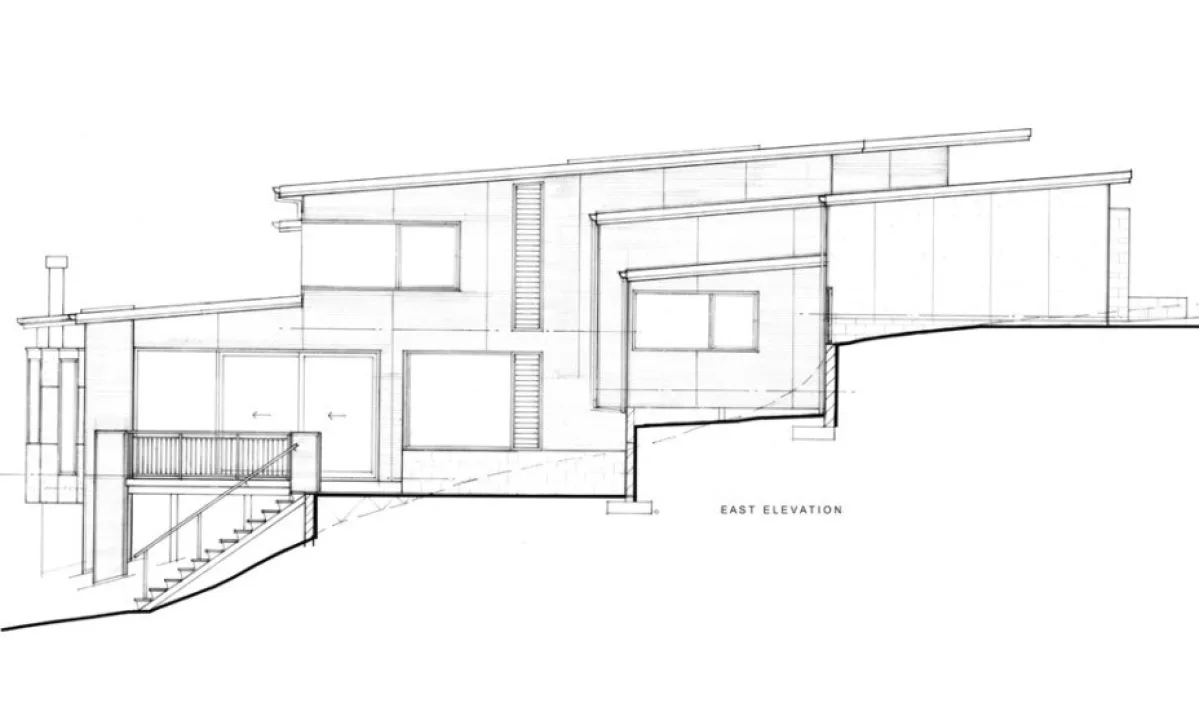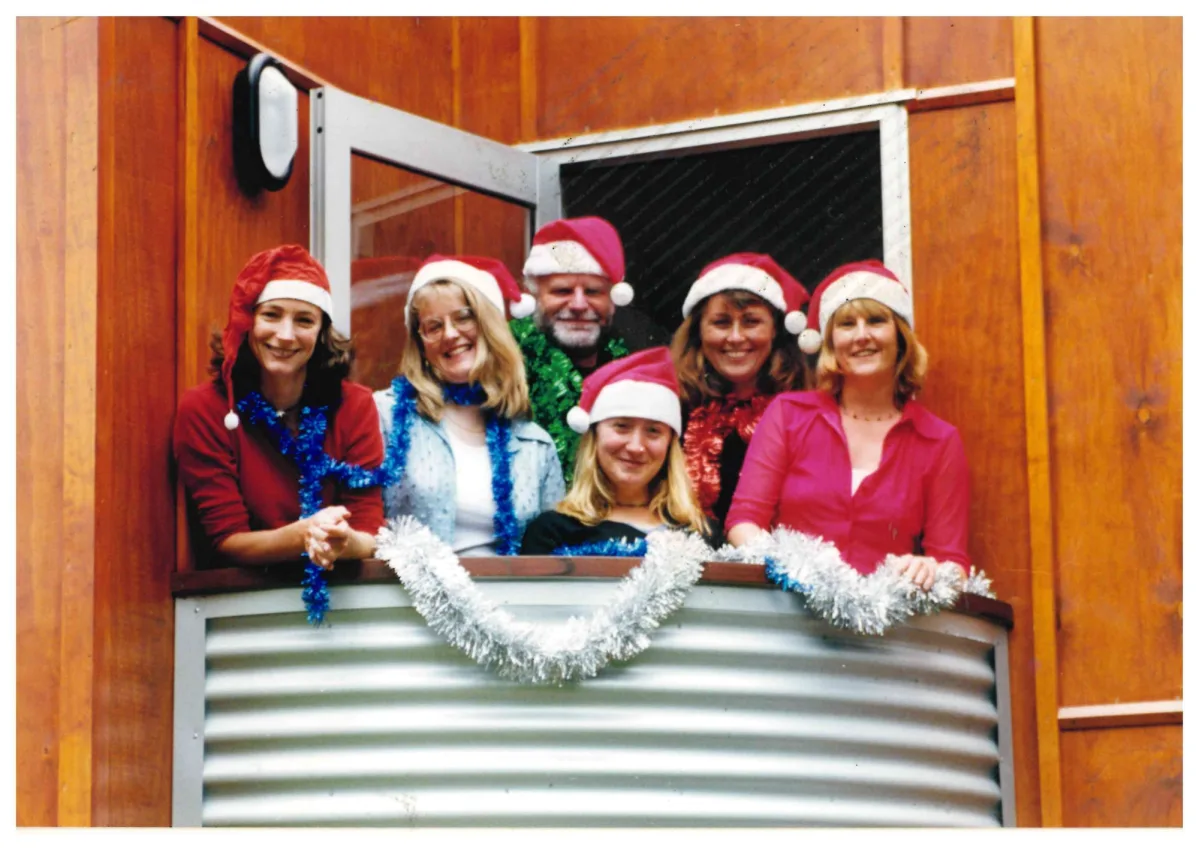Care | Work Series - #4 Carolyn Smith
20 Jul 2024For the fourth entry in the Care | Work Carolyn Smith shares how she managed motherhood alongside her career. Carolyn is the director of award winning practice Architecture Smith+Scully, with Hilary Scully. Their practice has an extensive body of work ranging from bespoke houses, to hospitality, retail and commercial projects.
In the profile, Carolyn reflects on how her and Hilary shaped a space in the industry for themselves to support the flexibility and work balance they required returning to work. Architecture Smith+Scully has now been practicing for 28 years and Carolyn shares some advice on navigating the balance of architecture and motherhood.

Introduce yourself! What is your current role, and your responsibilities at work and at home?
Hi my name is Carolyn Smith and I am a Registered Architect and Director of Architecture Smith+Scully; a residential practice I have co-directed with Hilary Scully for the past 28 years. I am also a mother to a wonderful, 24-year-old young woman, Hazel, and I am married to Duncan. Having also studied music and dance throughout my life, playing violin in regional and national orchestras in my teens and twenties, my other current passion is singing and arranging a cappella music.
What does a typical working day look like for you?
Over the years, the “typical” day has evolved and changed, and as I enter my 60’s (yikes!), I am enjoying working with considerable flexibility as to when and where I work. Today, a typical working day starts with 20 minutes of meditation, and then an hour of pilates and dance-based exercise. I then do about 6 hours working on projects, either at our Grey Lynn office, or working from my home office and connecting via Teams.
When you became a parent, how much time off did you take?
When I became a parent, things didn’t go quite to plan. Due to a significant pelvis injury, I had to take 15 months off work to rehabilitate to get walking again. It was more time than I had envisaged taking, but also a lovely gift in a way.
When you returned to work, were you part-time or full-time?
I started by working 2, then 3, and then 4 days a week, and I have continued with a roughly 4 day working week to this day. It was nice back then, to have a set day always locked in, to just be Hazel’s mum and take her to school, to music lessons, and to be available for school events. Also, it was nice to participate in a local community pilates class on a weekday with other local parents.

Did you return to the same role as before?
Yes I did return to the same role. Hilary and I had intentionally set up the practice to do exactly that. We would work 2 days a week on our own, and one day a week both together in the office to hand over any pertinent project developments. We also always had a full-time graduate working with us to ensure continuity of service for our clients, consultants and contractors. I felt it was important at that time to support our younger female graduates towards gaining their registration, and to show them a possible pathway forwards that combined both the business of architecture and motherhood in a manageable and (mostly) satisfying way.
Did your career goals/aspirations change after becoming a parent?
I think my aspirations and goals did change after becoming a parent. Perhaps I became a little less driven and single-minded, although I continued to work hard on gaining profile for our practice back then, to keep the work flowing in. Something that was noticeable at the time was that with time away parenting, and with no internet or social media, you had a feeling of losing traction in the industry and visibility in the marketplace. We relied on getting projects published in magazines, and with sustained parental breaks, there was naturally less work to put forward for publication.
Are you registered?
I think I knew that if I didn’t get myself registered early on, it would just get harder to find the time and energy for it, so yes, I sat and passed the registration exam as soon as I was able to, in 1990 after graduating in 1986. I was very fortunate that in the early days of JASMAX, John Sutherland took me under his wing, and tutored me during his lunch hours to help get me over the line. (I had not administered many building contracts at that point in time.) I will always be very grateful to John for his generosity at that time.

Did your workplace support your choice to have a family, and return to work?
To be honest, there really didn’t appear to me to be any suitable part-time possibilities in established architectural firms in the early 90’s, other than working for yourself somehow. Certainly, any role models of successful mothers in architecture were few and far between.
In 1996 Hilary and I simply set up our own practice, to keep our “hands in the clay” and stay current and connected, and to have some control over the prioritisation of our time. We made it work as best as we could for each other, to be architects, to be able to each have a family, and to parent the way we had hoped to.
What sort of support structure did you have?
A mixture of grandparent help and a local caregiver for a few days a week worked well early on, and then at 2-3 years old, 3 days a week in daycare was the way we managed things. It wasn’t always perfect, but in the end I think Hazel had a well-rounded, loving pre-school and school life, and parents who both contributed equally to her upbringing.
What challenges have you faced as a working parent?
Now that I am out the other side, so to speak, as an “empty nester” I can look back and really appreciate the challenges presented by combining motherhood and running a practice, working in architecture. Quite simply, they are of time and energy. You have less of both!
There were constant unplanned demands on your time, with child sickness, or afterschool activities, accidents at school, etc., let alone taking good care of one’s own health and welfare.
Do you feel having children has impacted on your career progression?
I am sure that having children has impacted on my career progression. I couldn’t see a way forward at the time to combine the two roles in a satisfying way, other than working for myself. That said, I think things have changed and progressed significantly since the early 90’s. There are many more possibilities and wonderful role models in the industry now. Even the COVID-19 pandemic has helped to shift expectations enormously around when and how we might work best.
How do you achieve a balance of career / parent / self?
For me personally, achieving balance has been a constantly evolving learning experience, but I now know that for me, if I can balance my day and my week with meditation, exercise, family and friend time, and doing something other than architecture that I love to do, for me this is singing, then I will also do my best work with my clearest mind.
What advice would you have given your past self about being a working parent?
Be yourself, trust yourself, enjoy yourself, and you don’t have to do it all.

Has being a parent affected the way you approach architectural practice?
I think becoming a parent made me a more compassionate and understanding person, and by extension one hopes, parenting has made me a better architect too. Architecture is so all-encompassing, all-consuming and intrinsically connected and interwoven into every aspect of our lives; so a rich, and diverse life cannot help but inform our designs and understanding of our clients’ aspirations and expectations.
Although the process of architecture has changed a lot during my time, I still do find that the relationships developed on a project, and the ability to work together with an ensemble of fantastic people with imagination and skill, to me is increasingly satisfying.
Do you have any other thoughts, advice, or experiences to share?
Over the years of running Architecture Smith+Scully, we have employed many wonderful young female graduates, who have then gone on to become registered and successful architects, parents and mentors. Each one of them was a pleasure to be a part of their journey and to assist them towards registration. What a wonderful team we would make altogether today! I have included a few of our, what became traditional Christmas card photos, for the office over the years.
I feel incredibly grateful for their trust with their formative years in architecture, and I’m so very proud of them all. I feel encouraged about the future of women in New Zealand architecture… It seems to me that there is more balance now, and the expectation that a woman can be an excellent architect is no longer in any doubt. I see the beautiful, confident projects coming from our New Zealand women architects, continuing to grow deep and strong. It makes me very happy.

Interview by Lisa McClintock
Edited by Lisa McClintock
The A+W NZ Care | Work series is a profile and research series started by Architecture + Women NZ to document how architectural workers are balancing their careers and their care duties. Through sharing experiences, guidance, and challenges, A+W NZ aims to provide support to those who are working whilst caring for family and/or others in their community and stimulate wider conversations in the industry.












